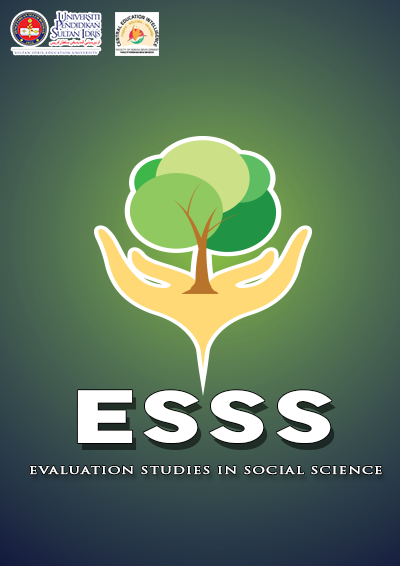Polysubstance Abuse: A Case Study
DOI:
https://doi.org/10.37134/esss.vol3.2.5.2022Keywords:
polysubstance, withdrawal symptoms, decision makingAbstract
The removal of polysubstance from the DSM-5 due to insufficient research and the current prevalence rate of polysubstance in Malaysia which is 1.4% makes it imperative to find evidence to prove the need to refocus on polysubstance abuse. The current case is of an elderly man who presented with a decision to live with abandonment, rejection, and physical illness than to have to deal with his craving and withdrawal symptoms as a result of his 33 years of intentional polysubstance abuse. He lost all his savings and lives with several medical illnesses. Psychological evaluation using the Diagnostic and Statistical Manual 5th edition criteria revealed the diagnosis of severe substance use disorder. Cases like this shows the importance of research into polysubstance use and to further justify the need for evidence-based intervention for the polysubstance abuse in Malaysian setting.
Downloads
References
American Psychiatric Association. (2013). Diagnostic and statistical manual of mental disorders (5th ed.). American Psychiatric Publishing, Inc. https://psycnet.apa.org/doi/10.1176/appi.books.9780890425596
Bruneau, J., Leri, Francesco, L. & Stewart, J. (2003). Understanding Polydrug use: Review of heroin and cocaine co-use. Addiction, 98(1), 7-22. http://dx.doi.org/10.1046/j.1360-0443.2003.00236.x
Clark, L. & Robbins T. W. (2002). Decision-making deficits in drug addiction. Trends in Cognitive Science, 6(9), 361-363. https://doi.org/10.1016/S1364-6613(02)01960-5
Crummy, E. A., O’Neal, T, J., Baskin, B. M. & Ferguson, S, M. (2020). One is not enough: Understanding and modelling Polysubstance use. Frontiers in Neuroscience. 14, 569. DOI: https://doi.org/10.3389/fnins.2020.00569
European Monitoring Centre for Drug and Drugs Addiction. (2009). Polydrug Use Patterns and Responses. Luxembourg: Publications Office of the European Union. https://www.emcdda.europa.eu/publications/selected-issues/polydrug-use-patterns-and-responses_en
Ismail, R., Abdul Manaf, M. R., Hassan, M. R., Mohammed Nawi, A., Ibrahim, N., Lyndon, N., … Kamarubahrin, A. F. (2022). Prevalence of Drug and Substance Use among Malaysian Youth: A Nationwide Survey. International Journal of Environmental Research and Public Health, 19, 4684. https://pubmed.ncbi.nlm.nih.gov/35457562/
McCambridge, J. & Strang, J. (2003). The efficacy of single-session motivational interviewing in reducing drug consumption and perceptions of drug-related risk and harm among young people: result from a multi-site cluster randomized trial. Addiction, 99(1), 39-52. https://pubmed.ncbi.nlm.nih.gov/14678061/
O’Donnell, J., Gladden, R. M., Mattson, C. L., Hunter, C. T., Davis, N.L. (2020). Vital Signs: Characteristics of Drug Overdose Deaths Involving Opioids and Stimulants — 24 States and the District of Columbia, January–June 2019. Morbidity Mortal Weekly Rep., 69, 1189–1197. http://dx.doi.org/10.15585/mmwr.mm6935a1
Ohana, D., Maayan, R., Delayahu, Y., Roska, P….Yechiam, E. (2015). Effect of dehydroepiandrosterone add-on therapy on mood, decision making and subsequent relapse of polydrug users. Addiction Biology, 21(4), 885-894. https://doi.org/10.1111/adb.12241
Regier, D. A., Kuhl, E. A. & Kupter, D. J. (2013). The DSM-5: Classification and criteria changes. World psychiatry, 12 (2), 92-98. https://doi.org/10.1002%2Fwps.20050
Smedslund, G., Berg, R. C., Hammerstrøm, K. T., Steiro, A., Leiknes, K. A., Dahl, H. M. & Karlsen, K. (2011). Motivational interviewing for substance abuse. PubMed, 5. https://pubmed.ncbi.nlm.nih.gov/21563163/
Downloads
Published
How to Cite
Issue
Section
License
Copyright (c) 2022 Temitope Folashade Aroyewun , Husna Najihah Binti Mohd Zaini, Samah Hatem Al Maki

This work is licensed under a Creative Commons Attribution-NonCommercial-ShareAlike 4.0 International License.





